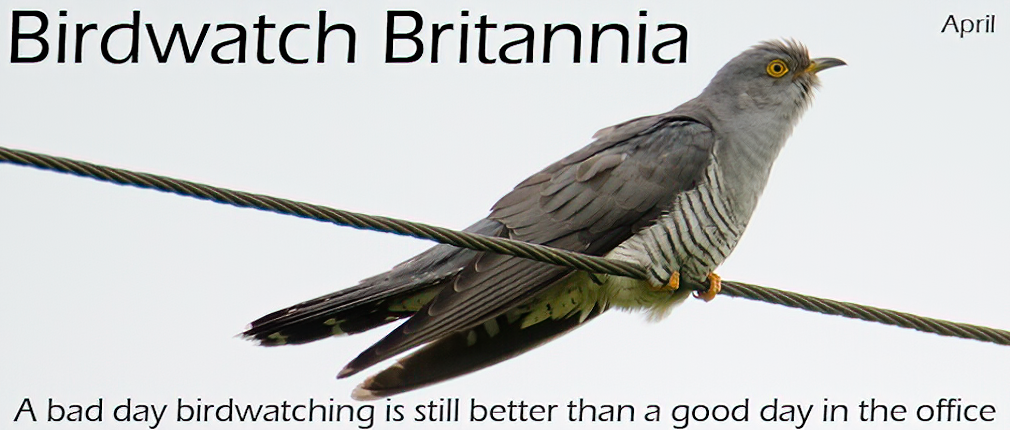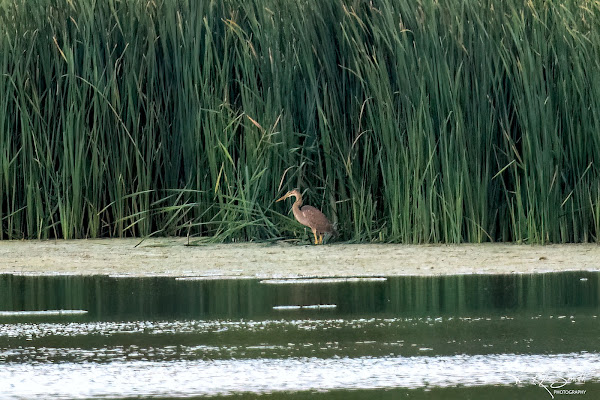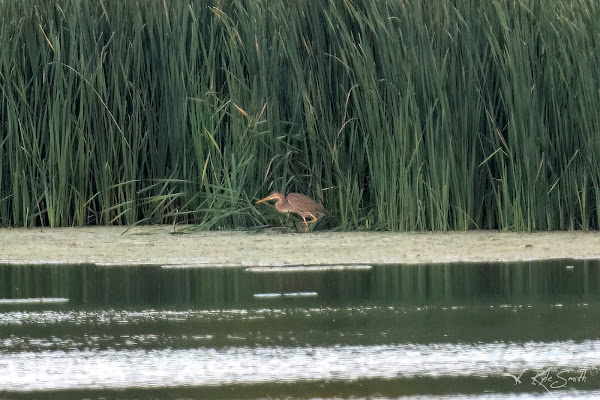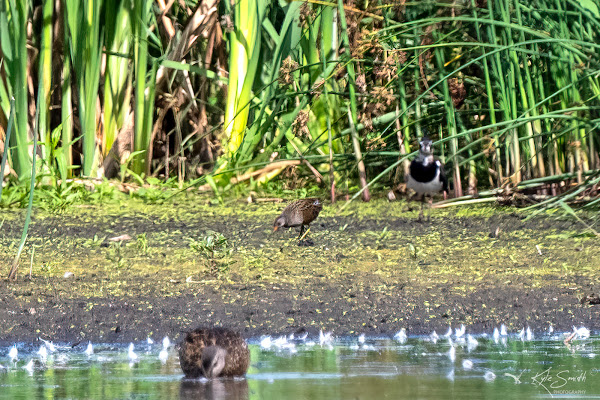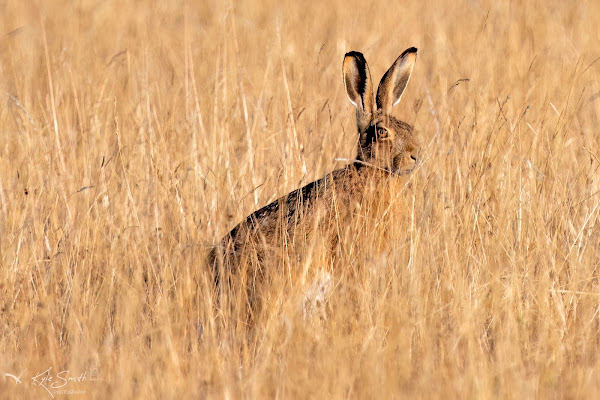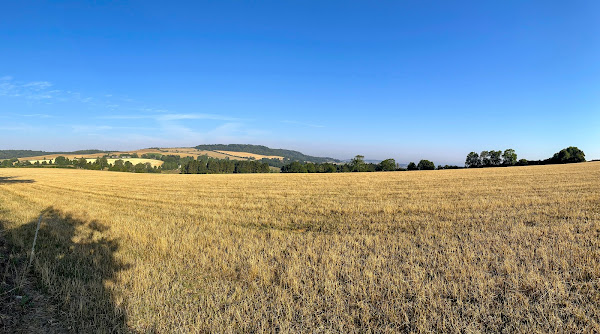We'd booked to make a trip up to see my mum and stopped at RSPB Leighton Moss on the way up - we couldn't stay long and as it happened the regulars said they'd never seen the reserve so quite (bird wise). We will have to try again during the winter to see if we can connect with bearded tits on the grit trays.
The following morning I arose early to get on Seamill beach at sunrise and popped on some walking boots mainly just to stop picking up sand on my shoes and trailing it through the hotel and car. As soon as I got on the beach, I could see a godwit feeding on the water's edge with oystercatchers - I took photos as I closed the distance to be sure and have a record should it depart. I got reasonably close, and the bar-tailed godwit seemed relatively at ease.

A couple of gulls flew too close and put up the oystercatchers and barwit up and they flew off towards Portencross - I decided to follow in pursuit all the while being watched by grey seals bobbing in the shallows. A big storage ship was positioned offshore (the Petrojarl Foinaven - length overall x breadth extreme: 250.2 x 34.05 m) - the Petrojarl Foinaven is an Offshore Support Vessel built in 1997 and currently sailing under the flag of Bahamas. Who knows what it is up to ... after about 10 minutes it set sail towards dock at Hunterston, taking a couple of support vessels with it.
I walked along, investigating each curlew however distant to see if I could identify a whimbrel - no joy along to Portencross Beach. It was obvious though that the number of redshanks had increased considerably from my previous visit - there were also more pied wagtails. On two occasions a group of six sandwich terns flew passed, presumably the same individuals on a circuit.


There was nothing else of note other than the usual gulls, gannets, cormorants and shag out on the water and so I turned and made my way back and passed the Seamill Hydro then out towards the three towns. Passing over the bridge crossing the burn I stopped to see if I could see a dipper - no dice - perhaps on the return. Not far ahead I came across a common sandpiper, working along the edge of the beach and away from the water's edge - it observed me from a distance and flew ahead and closer to the water, this time allowing me closer and a photo to be taken. On the rocks I stopped to look for rock pipits but was frustrated until a bird flew through, sporting a white flash on its rump - a wheatear - they must be back on the move after the breeding season. I followed it along the beach and eventually found it with a rock pipit just before the corner leading to the Waterside Hotel. Out on the rocks, amongst the oystercatchers, was my bar-tailed godwit taking a rest before it would be moved on by the incoming tide.



Time was marching on and so I turned back noting linnet and meadow pipits overhead. A pair of ringed plovers were very keen to catch my attention and are presumably still have a nest given their display. I tried not to linger long so as not to disturb them but still long enough for a couple of photos.
Halfway back I stopped and scanned the rocks as there were a number of birds together including curlew. A smaller bird flew across a channel and when it landed I could see that it was a whimbrel - excellent. I kept on surveying, but I couldn't locate any purple sandpipers. Back to the hotel at the allotted hour, a shower, and then breakfast.

The following day started warmer and clearer, so I decided to have a trip down to the Irvine Bogside Gold Course and Bogside Flats SSSI beyond. Here there have been hen harriers and short eared owls in the past but not on this occasion. I got a little excited when a large bird opened wings on a distant structure but on review it was a juvenile pheasant. I watched and waited at the end of the driving range seeing chiffchaff, willow warblers, sedge warbler, stonechat, skylarks and both house martins and swallows. Eventually I moved on to see if I was in the wrong spot and reached the Garnock River. Here I saw many stonechats, skylarks, meadow pipits and flyover curlews and also the usual redshank and oystercatchers out on the muddy water's edges. A number of stonechats that I was watching appeared to be a family group.


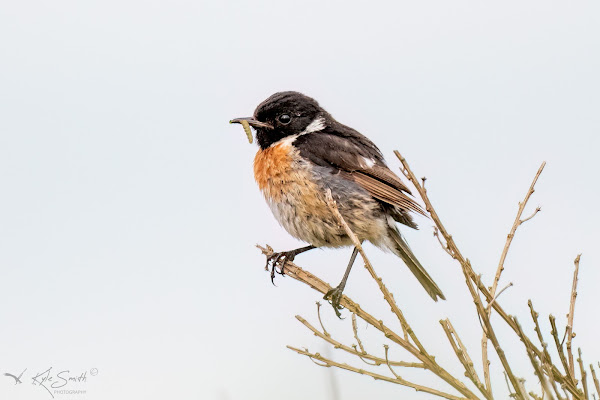

I wandered back to the driving range and found someone almost able to reach the perimeter fence. I kept off to the side just to be sure. Looking out I could see a roe deer watching me and presumably thinking I couldn't see it. I heard grasshopper warbler call briefly but couldn't see it - focussing on stonechat and sedge warblers instead. Then again, I heard grasshopper warbler - while I'd seen them at this site before it was on the opposite side of the flats. A sedge warbler had dropped into an area of pinkish flowers, and I took some photos - the bird was too obscured and so when I reviewed the photos they were not in sharp focus. A dunnock dropped in on the front edge of the flowery stalks and I took a photo; it was only then I realised it was actually a grasshopper warbler - that made my morning.


I made my way back to the hotel for breakfast and a shower - we were going to have lunch at Souters Inn in Kirkoswald; built on the site of the old schoolhouse where Robert Burns studied in 1775. The restaurant is named after Souter Jonnie, a shoemaker immortalised in a poem by Robert Burns, unveiling his everyday life and the skills of his trade. After a delicious meal we made our way across to Maidens Harbour only to find the tide out - while this exposed much of the harbour bed for waders, there weren't many of them. There were ringed plover, dunlin, oystercatcher, redshank and assorted gulls but nothing of interest out on the water. A single sand martin caught flies over the harbour, returning regularly to the pier wall - presumably still young in the nest. Grey mullet cruised up and down in the shallows of the harbour. We walked around, admired Ailsa Craig from close quarters and then set off down the coast road to Girven. Passing Turnberry Lighthouse we noted the parking and I hope someday to do some sea watching from there.



Wednesday morning birding didn't come to pass - I had a work thing - normal service was resumed on Thursday with a trip out to Stevenston Point. The sun was just rising as I arrived and watched rock pipits, sandwich tern, gannets, shag, cormorants, and eider ducks from the car park. I could see sanderling down on the beach to the south and made my way there passing stonechats on the way. I counted individuals along the shore and decided there were about 100 sanderling in three main groups.
For a change I walked right along the beach, the gulls ahead being particularly skittish. At the far end I could see guillemots and eider ducks out at distance, plus a bird I couldn't identify - it looked a bit like a Slavonian grebe - others thought so too in response to my Twitter post. I walked back to the point and from there watched the sandwich tern and gannets feeding offshore. I didn't manage to see any manx shearwaters but did see a couple more distant guillemots.
On the rocks I could see there were now ringed plovers with dunlin but no sign of purple sandpipers - I was going to be leaving Ayrshire empty handed with this species. As I packed up a group of sanderlings spun across the water and back, landing on distant rocks. All in all, a very enjoyable few mornings of birding.
